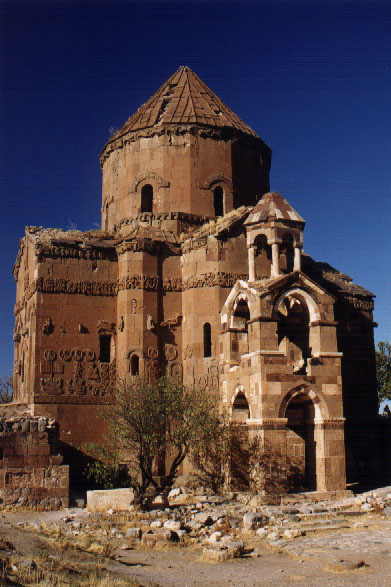 One of the most important resources available to mainstream reporters is a solid, printed list of names attached to clear information or opinion about a hot issue.
For a journalist, this is like a warm blanket on a cold night. You have a document. The names exist and can be verified. Often, the existence of this kind of document is news in and of itself.
One of the most important resources available to mainstream reporters is a solid, printed list of names attached to clear information or opinion about a hot issue.
For a journalist, this is like a warm blanket on a cold night. You have a document. The names exist and can be verified. Often, the existence of this kind of document is news in and of itself.
Yes, the document may represent only one side of a complex story. Still, the names are there to cite -- on the record. If the pope released a statement on the ordination of women, would it be news if a pack of Catholic theologians, priests, lay leaders and even a bishop or two signed a real, published, document opposing the Vatican's stance? As they say in northern zip codes West of Fargo, "You betcha."
Thus, we read in the Los Angeles Times:
Two hundred Turkish intellectuals last month launched an Internet signature campaign for an apology to Armenians for the 1915 massacres. "My conscience does not accept the insensitivity showed to and the denial of the Great Catastrophe that the Armenians were subjected to in 1915," the brief statement reads. "I reject this injustice and for my share, I empathize with the feelings and pain of my Armenian brothers and sisters. I apologize to them."
Within a month, more than 26,000 people signed on, a significant number in a country where the fate of the Armenians at the end of the Ottoman Empire has been largely unmentionable for decades. To those long frustrated by Turkey's intractability on the issue, this campaign may appear an inadequate gesture. But it has immense value, educating many Turks about the violence done to Armenians for the first time and enabling those who are ready to come to terms with it.
So far, so good.
Why is this a major story? Well, we need to look at the history a bit. But please note that the subject of this post IS NOT the divisive issue of what did or did not happen to Armenians in Turkey in the early 20th century. So take your hand off that mouse poised over the "comment" link. That's an important subject, but don't go there. I have other fish to fry, right now.
Back to the subject of the Los Angeles Times story:
The official Turkish position on 1915 has shifted over time. It was a fight between local Turkish and Armenian bands. Or it was a forced resettlement -- a march on which hundreds of thousands of Armenians were sent to Syria, but most never arrived. Historians and politicians also have argued that it was actually Armenians who massacred Turks and that talk of an Armenian genocide was an international conspiracy. In contemporary Turkey, novelists, journalists, historians or other intellectuals who call the events a genocide or even mass murder can face trial under the infamous Article 301 of the Turkish Penal Code, which outlaws insulting Turkey, its government or its people.
Organizers of the "I apologize" campaign notably shied away from the word genocide, opting instead for "the Great Catastrophe," a phrase initially used by Armenians.
And so forth and so on. There are lots of names and on-the-record, even printed, statements in this piece.
So what's the problem?
 Here is the headline on this essay by Esra Ozyurek, associate professor of anthropology at UC San Diego:
Here is the headline on this essay by Esra Ozyurek, associate professor of anthropology at UC San Diego:
Opinion
A Turkish 'I apologize' campaign to Armenians
The fate of Armenians in 1915 remains taboo in Turkey, but some intellectuals are taking action.
Yes, this is an op-ed page piece. It includes some first-person material and analysis.
The question, for me, is why a major newspaper -- like this one -- elected to handle this subject as an opinion, op-ed page piece when it included such hard, nailed-down, factual hooks for a major news report.
I can think of several reasons. Here are two, one that troubles me and one that troubles me for a different reason.
First of all, we may be reaching the point that newsrooms no longer have the personnel to handle these kinds of big, hard subjects, both foreign and domestic (or handle as many of them). Thus, the only way to get them into the paper is to let someone write about them on the op-ed page, perhaps a person who is involved on one side of the issue or another. That troubles me, as we are poised on the edge of an era of non-profit, niche, "European" style news/commentary.
Then again, perhaps these are stories that are so hot, so controversial, that the editors decided that anything that was written about them had to be labeled "opinion," because news coverage is impossible on this kind of topic -- especially when religion is involved. That really, really troubles me.
Now this has been coming up more often in cyber-discussions among your GetReligionistas -- these op-ed essays about religion that contain facts, often unreported facts, that deserve "serious" coverage in the news pages.
What's going on? That's what we want to know.
Anyway, we have decided to create a "category" up there on the left sidebar of the site dedicated to this syndrome. In the past, we have not written about op-ed and opinion essays unless they included hard information that we thought would be of interest to Godbeat professionals (or they are on the cover of nonNewsweek).
We are still not going to write about everyday, merely interesting op-eds. But when you see the headline slug "Got news?" you'll know that we are dealing with a piece of reporting that one of us thinks is worthy -- because of its hard, factual content -- of moving over into the hard-news pages.
Yes, this piece may be one-sided. It may have been written by an activist involved in the debate that is at the heart of the story. That is often the main point. We are arguing that the editors should have mustered up their courage and assigned someone to write a balanced, accurate piece of journalism about this topic or event.
Make sense? So, if you are curious, click here and you can see some of the first examples of this syndrome that we have spotlighted. I am sure, sadly, that there will be more soon.
Now, prepare to comment on this question: What do you think is going on here?
Photos: A town crier. A 10th century Armenian church in Turkey.
